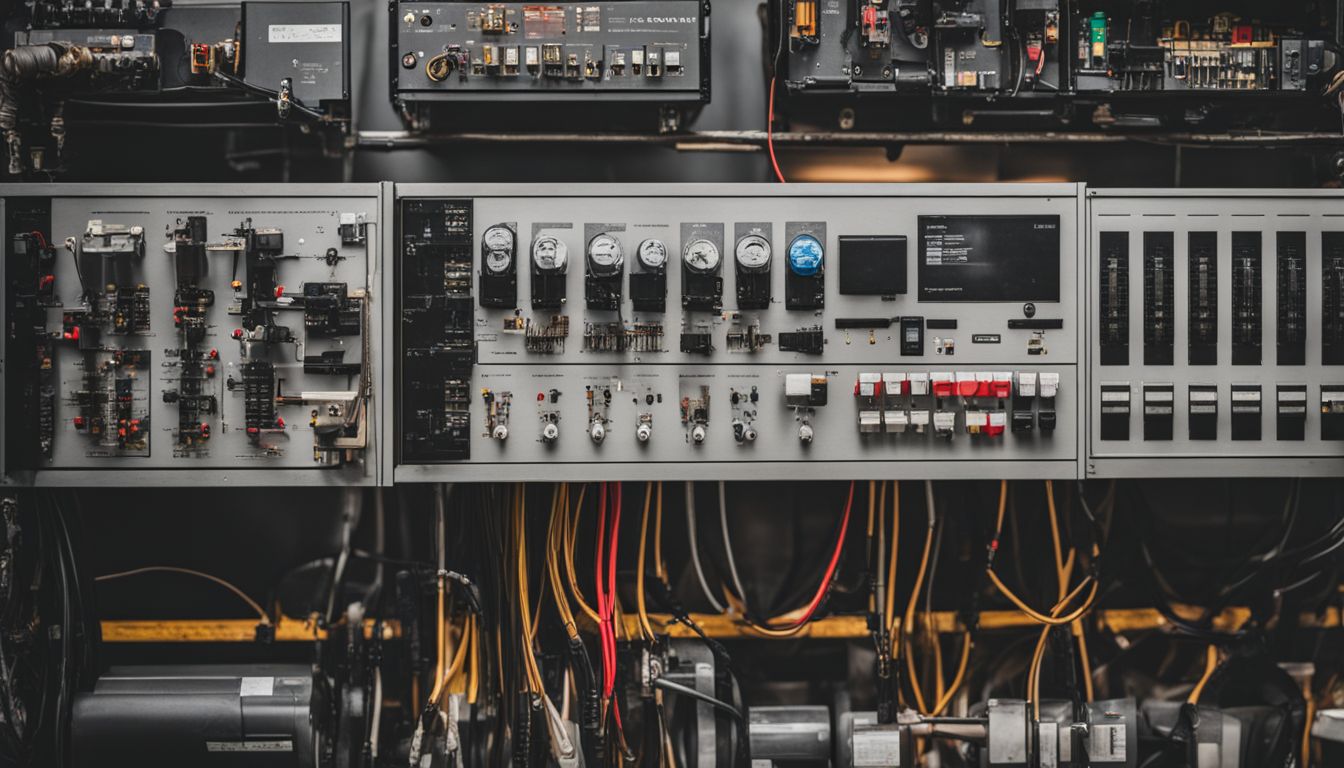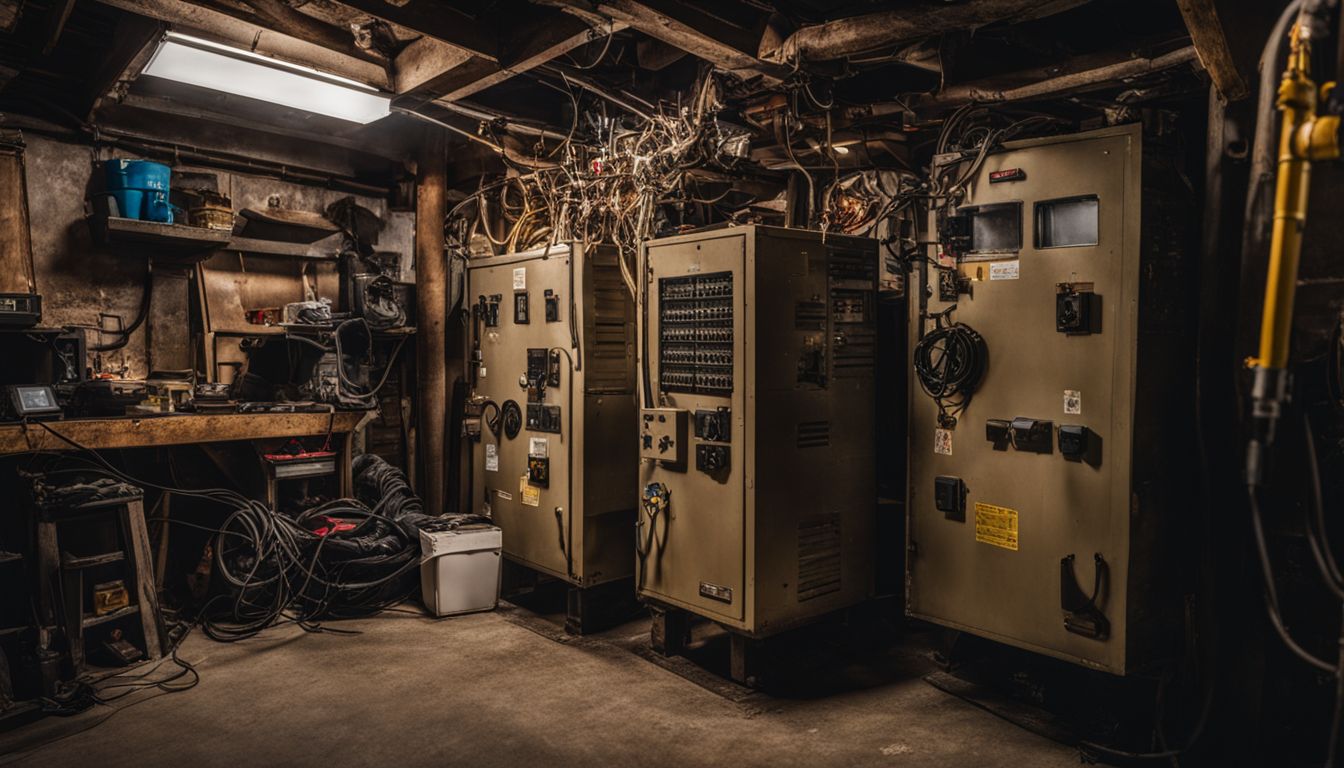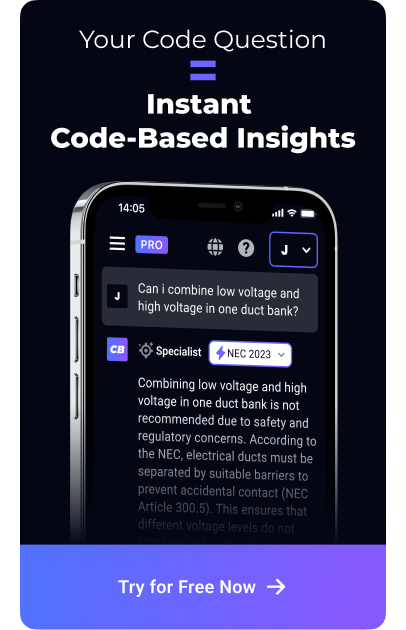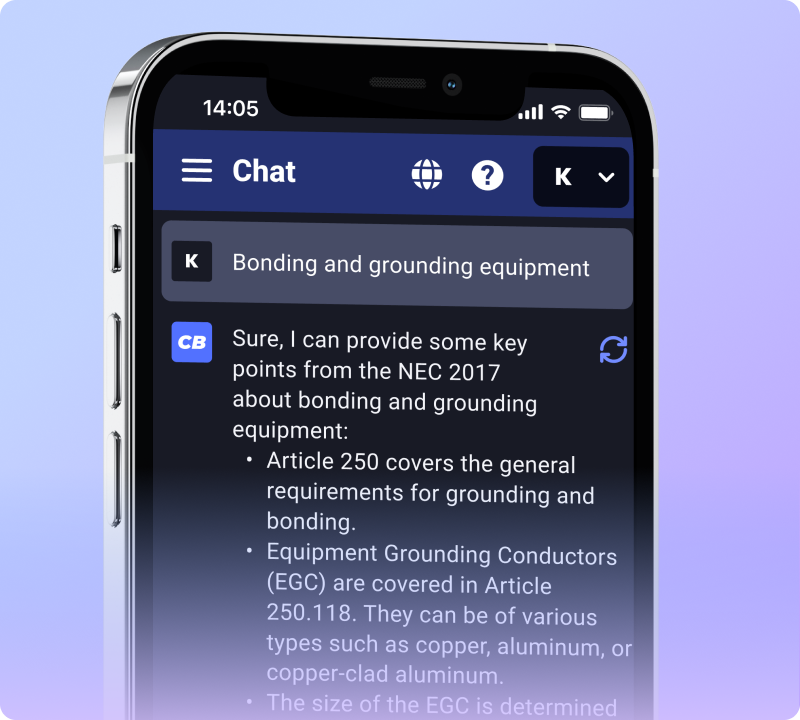

Have you ever wondered why some electrical setups don’t follow the National Electrical Code (NEC)? The NEC sets rules for most types of wiring and circuits to keep people safe. But it doesn’t cover everything.
Our article breaks down which installations skip these rules. Keep reading to find out more!
Key Takeaways
- Some electrical installations don’t follow the National Electrical Code (NEC) because they have unique needs or fall under different safety standards. This includes ships, planes, and cars which all need special rules for safety.
- Federal lands, temporary testing setups, railway systems, and power stations managed by utility companies also skip NEC rules. They use their own guidelines to keep things safe and running well.
- Not following the NEC doesn’t lower safety. These exceptions still meet high safety standards through other specific regulations or industry norms. Safety remains a top priority even in these specialized areas.
Understanding the Scope of the National Electrical Code

The National Electrical Code sets guidelines for electrical installations. Some installations fall outside the code’s scope.
Covered Installations
The National Electrical Code (NEC) sets safety standards for a wide range of electrical installations. It covers many types of buildings and equipment to ensure they meet current safety requirements.
- Residential homes: The NEC applies to the electric systems inside houses, condos, and apartments. This includes wiring for lights, outlets, and major appliances.
- Commercial buildings: Stores, offices, and restaurants must follow NEC guidelines for their electrical setups. This also covers outdoor lighting and signages.
- Industrial sites: Factories and warehouses use lots of power and have big machines. The NEC helps keep these places safe by setting standards for how electrical equipment should be installed.
- Public spaces: Places like schools, hospitals, and libraries must adhere to NEC rules to protect people from electric dangers.
- Temporary structures: Even short-term setups like construction site trailers and holiday lighting displays need to follow certain NEC regulations.
- Agricultural buildings: Farms with electrically powered machinery or irrigation systems are covered under the NEC to prevent fires and other hazards.
- Marinas and boatyards: Since water conducts electricity, these areas have special rules under the NEC to keep docks safe from electric shock risks.
- Renewable energy installations: Solar panels and wind turbines connect to the grid or supply power directly to buildings must comply with specific sections of the NEC.
Each type listed demonstrates the NEC’s broad reach in ensuring that various environments adhere strictly to safety protocols regarding electrical systems, from copper wiring in residential homes to complex circuit breakers in industrial settings.
Not Covered Installations
The National Electrical Code (NEC) sets the standard for safe electrical design, installation, and inspection. But it does not cover all types of installations. Here are the details on those exclusions:
- Maritime and transport environments like ships and railway cars fall outside NEC’s jurisdiction. These areas use their own safety standards due to their unique electrical needs and risks.
- Temporary testing setups often bypass NEC rules. These systems are for short-term use under controlled conditions to test new equipment or systems.
- Federal lands or properties operate under different regulations. Installations in places controlled by the federal government, such as military bases, do not follow the NEC.
- Railway rolling stock, including trains and trams, are exempt from the NEC requirements. Their electrical systems adhere to industry-specific guidelines instead.
- Installations within mines explore an area where NEC does not reach—both underground and surface mining operations use specialized safety measures governed by other authorities.
- Outdoor telecommunication towers and related infrastructure that communication utilities exclusively control do not need to comply with NEC standards.
- Power substations and distribution stations managed by utility companies also operate outside of NEC oversight, guided instead by standards suitable for high voltage power transmission.
Each of these exceptions arises from the need for specialized safety protocols or regulatory control specific to conditions or national security considerations, ensuring that every installation operates under guidelines best suited to its environment and function.
Specific Installations Not Covered by the Code

Certain installations, such as maritime and transport systems, temporary testing setups, federal-controlled installations, and railway rolling stock equipment are not covered by the National Electrical Code.
This exclusion is based on specialized regulatory frameworks, national security concerns, and specific industry standards.
Certain Maritime and Transport Installations
The NEC, known for setting safety standards in electrical wiring and equipment, does not extend its rules to ships, railway vehicles, and planes. These types of transportation have their own set of guidelines because the environments they operate in are unique.
The conditions on a ship or an aircraft can greatly differ from those found in buildings or other stationary structures. This means that what works for a house might not be safe or practical for use in these transport modes.
Installations in automotive vehicles also fall outside the NEC’s coverage.
In addition to ships and planes, installations within cars and trucks don’t follow NEC regulations. This exclusion ensures that vehicle manufacturers adhere to specialized standards that suit the dynamic nature of automotive systems better than the stationary-focused guidelines of the NEC would.
Temporary Testing Systems
Moving from maritime and transport installations, we now explore temporary testing systems. These setups often use wires in ways that don’t follow normal rules. Conductors might need extra shields if they could get hit or damaged.
The wire’s heat rating should handle the highest safe temperature around it. NEC rules on how many conductors you can have also count for these test setups.
For temporary testing areas exposed to sunlight, the power capacity of wires might need adjusting because the sun makes them hotter. Sometimes, too many wires in a space mean you must lower the amount of electricity they carry.
This ensures everything stays safe and works right.
Installations Under Federal Control or Jurisdiction
Certain installations under federal control or jurisdiction, such as those overseen by the Federal Communications Commission and the Federal Energy Regulatory Commission, fall outside the purview of the NEC.
Moreover, installations located on Native American reservations and rights-of-way managed by federal entities are also not covered by the NEC. These exclusions stem from specific regulatory frameworks and national security concerns that necessitate separate standards and oversight.
Moving on to “Equipment for Railway Rolling Stock”…
Equipment for Railway Rolling Stock
Railway rolling stock equipment is not covered by the NEC. This includes the electrical installations within railway vehicles such as trains and trams. These installations are subject to their own specialized regulatory frameworks, ensuring safety and compliance within the transportation industry.
Furthermore, power generation, transformation, transmission, and distribution for railways are also excluded from NEC coverage. This means that specific guidelines and standards tailored towards railway rolling stock apply to these electrical installations rather than those outlined in the National Electrical Code.
Moving on to “Reasons for Exclusions”…
Reasons for Exclusions

Certain specialized industries have their separate regulatory frameworks, and there are national security concerns to consider as well. For more details, continue reading the blog.
Specialized Regulatory Frameworks
Specialized regulatory frameworks, such as those governing maritime and transport installations, are not covered by the National Electrical Code (NEC). These regulations fall under specific industry standards and oversight.
Installations under federal control or jurisdiction also operate within specialized regulatory frameworks distinct from the NEC’s scope. It’s crucial for electrical professionals to comprehend these exclusive regulations to ensure compliance and safety in diverse operational contexts.
The NEC’s exclusions extend to equipment for railway rolling stock, subject to separate specialized regulatory frameworks focused on safety and operation standards. Understanding these distinct regulatory environments is essential for maintaining electrical safety and adherence to industry-specific requirements, providing a comprehensive approach toward expansive electrical system regulation.
National Security Concerns
National Security Concerns
exclusions in the National Electrical Code
The authority having jurisdiction may grant exceptions for specific installations under certain conditions, balancing security with operational needs within the electrical industry.
Specific Industry Standards
Specific industry standards are critical for ensuring the safety and functionality of various specialized electrical installations. These standards, such as those developed by NEMA, UL, and CSA, provide specific guidelines tailored to industries like railway transportation and maritime operations.
By addressing the unique needs of these sectors, these industry standards play a vital role in promoting safety, reliability, and compliance with relevant regulations. For example, equipment used in railway rolling stock must adhere to stringent standards set forth by organizations like NEMA to ensure optimal performance and passenger safety.
Embracing these industry-specific guidelines helps maintain the integrity of electrical systems in diverse operational environments.
…
Impact of Exclusions

The exclusions in the National Electrical Code affect safety and create challenges for compliance and enforcement. Safety considerations are impacted, as well as enforcing standards becomes more challenging due to these exclusions.
Safety Considerations
The NEC puts primary emphasis on safety. It aims to safeguard people and property from electrical hazards. The exclusion of certain installations does not compromise this safety objective, as their specialized nature requires alternative regulatory frameworks, ensuring high safety standards are maintained in those specific industries.
Compliance and enforcement challenges may arise due to these exclusions, but they do not diminish the overall commitment to prioritize safety in all covered installations.
Exclusions aim to maintain high safety standards across diverse industries by acknowledging the need for specialized regulations and industry-specific norms. Safety is paramount in all aspects of electrical installations, whether covered or excluded within the NEC framework.
Compliance and Enforcement Challenges
Transitioning from safety considerations to compliance and enforcement challenges, the implementation of the National Electrical Code (NEC) poses several hurdles for regulatory bodies and authorities.
One primary challenge arises from interpreting and applying specialized industry standards, such as those related to hazardous locations or railway rolling stock equipment. Additionally, navigating through the complexities of federal control over certain installations and reconciling them with NEC provisions presents another layer of difficulty.
Moreover, ensuring compliance becomes daunting in maritime environments due to unique conditions not explicitly addressed by the NEC.
Furthermore, enforcing the NEC faces intricacies concerning national security concerns, necessitating a meticulous balance between standard adherence and security imperatives. The ever-evolving nature of technology compounds these challenges as new systems, like supervisory control and data acquisition (SCADA), demand tailored enforcement approaches.
Lastly, grappling with these dynamic aspects introduces paramount enforcement difficulties for occupational safety bodies such as OSHA amidst their mandate to uphold electrical safety regulations in diverse industrial settings.
Conclusion
In conclusion, the National Electrical Code (NEC) does not cover certain installations such as those pertaining to maritime and transport, temporary testing systems, federal control or jurisdiction, and equipment for railway rolling stock.
These exclusions are driven by specialized regulatory frameworks, national security concerns, and specific industry standards. The impact of these exclusions is significant in terms of safety considerations and compliance enforcement challenges in the realm of electrical installations.


